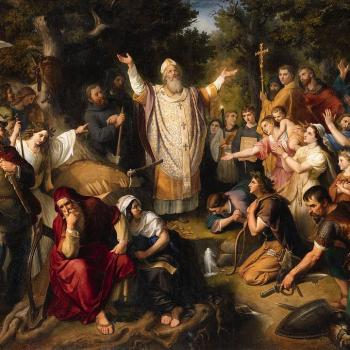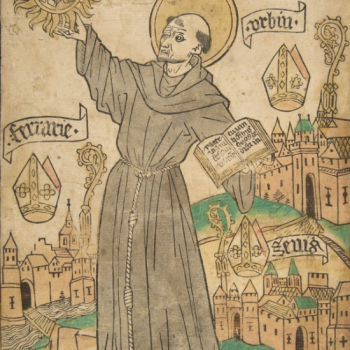I would like to take a brief look at Luke as a whole. When I work on a puzzle I often find it useful to take a good look at the whole picture before I examine the individual pieces. By doing this I feel comfortable working on a small section; the larger picture helps me understand the smaller parts. Reading the bible is somewhat similar. If you want to understand a passage getting a good look at the context of the whole book is quite helpful, and it’s something many of us don’t take time to do.
The Gospel of Luke is the longest of the four Gospels and the third in order of occurrence in the New Testament. It is one of the synoptic gospels along with Mark and Matthew. Synoptic comes from a Greek word which means “seen together.” These three gospels are so designated because of their remarkable similarity to one another in contrast to John which is a more divergent source. Passages in Luke will often have a parallel in another gospel in which the same story is told in a slightly different way. In examining any passage in the Bible one must look for parallels elsewhere. This is especially true in Luke.
There are a few things you should know about Luke that will make interpreting this Gospel a richer, and somewhat more cognizant experience.
1. First Luke was probably written for more of a Gentile context then Matthew or Mark, because of this he does have a tendency to explain more about Jewish culture then the other synoptics. That is not to say that he does not use Jewish culture and history freely within the text, he does. In fact there are some things in Luke which are deeply entrenched with the culture and history of Judaism that without having a good understanding Judaism in the first century you could easily miss what is going on. While reading Luke or any other gospel you should always ask yourself if there is anything in the background you need to know more about.
2. Another thing you should keep in mind while reading Luke is that he is using sources. He tells us at the beginning of this Gospel that it is a result of research from a variety of sources. So do not be shocked if Luke seems to be interacting with other material here and there, he probably is.
3. Finally Luke seems to have an emphasis on the poor and the widow. Luke links the life of Jesus strongly to a way of life that uplifts the oppressed, and marginalized in society. Much of what Jesus says in Luke will challenge your allegiances and your pocketbook, that is if you are actually willing to take it seriously.
The book has often been divided into six separate parts. These parts are not outlined in the text itself. Rather they are the invention of scholars who have broken down the text in order to make some sense out of what is going on. The sections are as follows:
1. Introduction (1:1-4) – This section is an introduction to the book. In it he dedicates the book to Theophilus. Who or what Theophilus is remains a mystery.
2. Jesus is born, and grows up (1:5- 2:52) – This section deals with the early life of Jesus. His birth is foretold, as well as the birth of John the baptist. He is born, and Luke then recounts about some early encounters in the life of Jesus.
3. Baptism and Temptation (3:1-4:14) – Jesus is baptized by John the baptist, and is tempted in the wilderness. At this point we also get a genealogy of Jesus.
4. Jesus’ ministry in Galilee (4:14-9:50) – This is a large section in which Jesus is teaching, healing, and working miracles in a region at the northern end of the Jordan river called Galilee. It is just north of the modern day “West Bank.” It is here that he calls his 12 Disciples.
5. The travel narrative (9:51- 19:27) – The Longest section of Luke, this is a section I will talk about in greater detail in the next segment. In this section Jesus does a great many things while traveling toward Jerusalem. In it he calls and sends, blesses and curses, praises and laments. Through it all we see glimpses of the Kingdom of God, and sometimes they are hard to accept.
6. Jesus in Jerusalem, His death, and resurrection (19:28-20:53) – Great stories are full of confrontation. Jesus’ life is no different. In this section the climax of the Jesus story rolls in. He enters and teaches in Jerusalem, then is arrested and is crucified. He dies, and then rises from the dead and ascends into heaven. It leaves you begging for a sequel, which you actually do get in a book called “Acts.” Acts picks up where Luke leaves off and follows the early years of the church. Although I think it is important to view Acts and Luke together, I won’t get into the themes and structure of that book here.
So there you have it: Luke, fast and furious. Now you are ready to start working on the puzzle.













